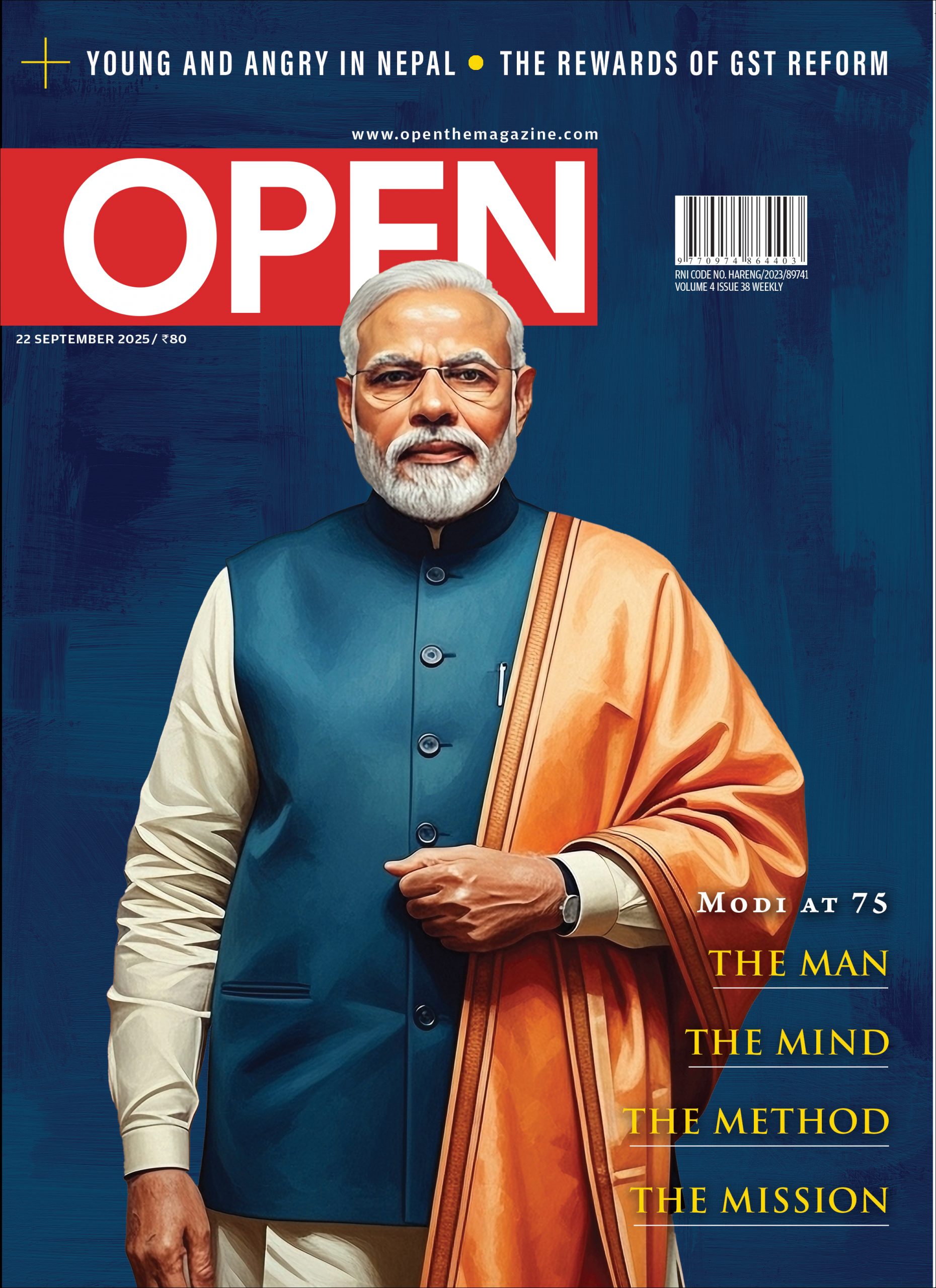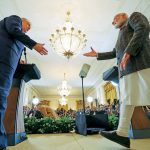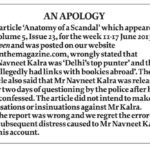Assembly Elections 2016: Backlash or Backslap?
How the minority vote will make the most decisive difference in the coming Assembly polls
/wp-content/uploads/2016/03/Backlash1.jpg)
MOHAMMED SALIM, POLITBURO member of the Communist Party of India (Marxist), speaks in non sequiturs and mixed metaphors. He guffaws at his one-liners, a smug look on his face. He tells you that, in hindsight, it would have been a capitulation of all “communist” values to align with the Mahagathbandhan in Bihar because the Congress party was part of the Grand Alliance, headed by chief minister Nitish Kumar and RJD chief Lalu Prasad, which routed the BJP last November in a bitterly fought election. The Marxist Lok Sabha member from Raiganj argues that his party will hold on to those values that make it distinct from parties that forge tie- ups without any principles, and justifies the “understanding” in West Bengal this time around with former arch- rival Congress, saying the idea is to ensure the defeat of the Mamata Banerjee-led Trinamool Congress. He insists that it is not a coalition, but a mere joining of hands with an opposition party in the state to end Banerjee’s “misrule” of the past five years.
Salim is a gifted conversationalist, but behind his persuasive ways and clever talk, farce lurks.
The justifications he comes up with may be enough to hoodwink party leaders from its stronghold Kerala who were upset about the prospects of a provincial alignment with the Congress, their enemy No 1 in the southern state. However, the neat ruse to keep opposition from within the party at bay falls way too short of credentials of being an embodiment of principled political action. The profound question is: what to make of posters across West Bengal in which the Congress’ and CPM’s election symbols overlap each other? Salim squirms at the mention of the word coalition and gets into the nuances of what is an intricate and complex tie-up: the Congress and the CPM will compete with each other if that could ensure Trinamool’s defeat in a particular seat. They will also back ‘joint independent’ candidates in areas where both parties can’t field candidates for fear of a violent backlash.
Finally, he lets it out: it is crucial that they pull in Muslim votes to eat into the Trinamool vote base.
The minority vote is key not only in West Bengal, but also in two other states going to the polls over the next two months—Assam and Kerala, both home to a sizeable chunk of non-Hindu voters. While the polls in these three states bring to the fore the fight for the minority vote, in Tamil Nadu the Congress has become a perpetual tail- ender to regional parties, a trend that is spreading to other states. For instance, in West Bengal, the Congress has become a B-team of the Left and hopes to gain in pockets of North Bengal. Interestingly, it is a status that the Grand Old Party has got used to over the past decades thanks to its waning electoral supremacy. Of course, it has stood to gain and bask in reflected glory—for instance, of the Mahagathbandan’s success in Bihar. Meanwhile, the Congress is not expected to make any headway in the Union Territory of Puducherry, which goes to polls along with Tamil Nadu and Kerala on 16 May, where a breakaway group of the Congress, led by Chief Minister N Rangasamy, is in power.
Assam CM Tarun Gogoi fears Badruddin Ajmal’s All India United Democratic Front will eat into Congress’s traditional vote bank that comprises Bangladeshi immigrants among other Muslims
IN WEST BENGAL, the anti-Trinamool Congress bloc hopes to gain from what opposition leaders such as Congress’ Adhir Ranjan Chowdhury, who represents Berhampore in the Lok Sabha, claim is popular resentment against Banerjee. The CPM and the Congress also expect to cash in on a recent sting operation in which 11 Trinamool Congress leaders were caught on camera accepting bribes in return for favours to a fictitious company. “Certainly, we are looking at capturing Muslim votes because the community accounts for a huge chunk of the state’s population,” a CPM leader from the state told Open.
It is indeed a hot pursuit. And unsurprisingly, Chief Minister Banerjee is leading the race.
So far, she has left nothing to chance. Political pundits attribute her alleged reluctance to clamp down on terrorists from Bangladesh who have crossed over to West Bengal through its porous borders to fears of incurring the wrath of Muslims who are now wooed with equal ferocity by the CPM as well as the Congress party. Data show that 46 out of 294 Assembly constituencies of the state have a Muslim ‘concentration’ of more than 50 per cent. The figure, reports say, is 40-50 per cent in close to 16 seats and 30-40 per cent in 33 seats, which means that in at least one-third of the seats in the state, the Muslim vote is the single-most crucial factor in a poll. Pundits have put down the drubbing the Left Front suffered in 2011 to Muslims veering away from its fold. Muslims in West Bengal account for 28 per cent of the state’s electorate.
For her part, Banerjee has never lost an opportunity to attend Muslim rallies to warm up to the community amid talks of a split of Muslim votes among other secular parties and rebels from the CPM and Trinamool Congress. As part of a major plan to retain her sway among Muslims, her government offers monthly allowances to muezzins and imams. “She doesn’t want to give up easily what she had won over after much struggle,” says a Trinamool Congress leader referring to her efforts to endear herself to minorities who had distanced themselves from her briefly—it took her more than 10 years to win back their trust, thanks to her 1999 entry into the BJP-led National Democratic Alliance (NDA). In border districts such as Birbhum and Malda where criminal gangs, mostly led by Muslim dons, call the shots, Banerjee has reportedly allowed activities such as illegal sand mining, fake currency distribution and poppy cultivation to flourish. Prior to that, when the CPM was in power for 34 years, the party had connived at such crimes. “I am not denying that the CPM, too, has to own up responsibility for the rise of such mafia groups,” concedes a CPM leader based out of Kolkata. “But it is under Mamata that they have received industry-like patronage and growth,” he claims.
This, certainly, is not a Bengal-centric trend.
Like West Bengal, which goes to the polls in six phases starting on 4 April and winding up on 5 May, Assam, where polls will be held on 4 April and 11 April, too, will see tireless efforts by politicians for Muslim votes.
CHIEF MINISTER TARUN Gogoi, the Congress stalwart of Assam, is a worried man. He is facing the biggest battle of his life yet. His dilemma is that there are new claimants for Muslim votes but he can’t enter into any pacts with pro-Muslim parties for fear of antagonising Hindu voters, who, possibly, would veer towards a relatively new contender, the BJP, which has made all-out efforts to establish a major foothold in the state. After the poll debacles in Delhi and Bihar, this is one state—among those going to polls in April-May—where the ruling party at the Centre has some realistic chances of making a dramatic progress.
It is not shocking to see why. From being a marginal player in state politics until the last General Elections— when the BJP secured a 36 per cent vote share and won seven of the 14 seats (leading in 69 Assembly constituencies)— it has now become a state where the party hopes to get a good chunk of more than 65 per cent Hindu votes.
For Gogoi, who turns 80 this April, the challenges are daunting. While it is the BJP that is nipping at his heels in his hunt for Hindu votes, it is Badruddin Ajmal’s All India United Democratic Front (AIUDF) that he fears would eat into the Congress’ traditional vote bank that comprises Bangladeshi immigrants among other Muslims. Muslims constitute 34 per cent of the electorate in the state, and in the 2014 elections, AIUDF polled more votes than the Congress in the densely Muslim-populated Lower Assam.
Of the 126 seats in the state, Muslims account for more than 50 per cent in 35 seats, more than 40 per cent in 11 constituencies, more than 30 per cent in another 11 and more than 20 per cent in 13 seats. In central Assam, Muslims form 34 per cent of the electorate, 37 per cent in Barak Valley, 55 per cent in Lower Assam and 7 per cent in Upper Assam. According to the 2011 Census, in Salmara South Constituency in the Dhubri region, which has seen large-scale exodus of Hindus since early 1990s, Muslims account for 97 per cent of the population. Districts such as Kokrajhar, Baksa, Chirang and Udalguri, traditionally home to Bodos, has seen rapid growth of the Muslim population over the past decade.
AIUDF’s growth as a party that represents Muslims has been tremendous. Between 2009 and 2014, its tally in the Lok Sabha went up from one (Dhubri Lok Sabha) to three (Dhubri, Barpeta and Karimgunj). Between 2006 and 2011, its tally in Assembly elections climbed from 10 to 18. In the 2014 Lok Sabha elections, in which it won 15 per cent of the vote share, AIUDF had leads in 24 assembly seats.
Like religion, ethnicity also plays a big role in Assam.
While the BJP is trying to take advantage of anti-Muslim sentiments among Bodos in districts that have seen major skirmishes over the past several years by aligning up with major Bodo parties, the Congress has tied up with United People’s Party (UPP), a pro-Bodo entity. Gogoi, who has been in power for the past 15 years, is bracing for a tough fight with the BJP entering into an alliance with the Prafulla Kumar Mahanta-led Asom Gana Parishad (AGP). Meanwhile, the BJP has also announced five Muslims on the list of 117 candidates for the 126-seat Assam Assembly.
IN KERALA, A perception runs deep: minorities are rapidly gaining political power. Many Hindu leaders—of various powerful communities—have time and again warned the Congress against yielding to demands of the Muslim League, a powerful ally, for higher representation for Muslims in the government.
Muslims in Kerala may have been an object of jealousy thanks to them hitting pay dirt in the Gulf Boom. Yet, it is their display of religious identity that has attracted the displeasure of Hindus and others
Sensing winds of change, none other than a noted leader of the CPI, a key ally in the CPM-led Left Democratic Front, had demanded many months ago that the Left must position itself as champions of the majority community. In a TV interview, CPI state secretary Kanam Rajendran said the Left should shed its “minority appeasement” policies and warm up to its “age-old voters more”. He also claimed that a majority of Hindus seem to think the Left practices pro-minority secularism. Big Brother, the CPM, didn’t endorse Rajendran’s line, saying he was parroting the accusation levelled against Left parties by the RSS. “If the Left becomes pro-Hindu in all its activities, then the Left is not Left, but RSS,” CPM state secretary Kodiyeri Balakrishnan had said.
However, several Left leaders concede secretly that Rajendran could be right. They are appalled by the pro- Church and pro-Muslim posturing by a few CPM leaders. “If the Hindus abandon the CPM, then the CPM has no future in Kerala. Which means it will remain a Tripura- centric party,” warns another CPI leader, referring to the growing political and financial clout of minorities in the southern state. Rajendran had argued that the Hindu population had fallen from 56 per cent of the state’s population in 2001 to 48 per cent now. The Congress’ allies include Church-backed Kerala Congress factions and the Muslim League—which means the ruling UDF can be sure of securing the majority of non-Hindu votes.
Yet, in this polls season, notwithstanding the displeasure among a section of Hindus, both blocs are busy wooing minorities.
CPM’s senior state leadership has recently come under attack from a section of party workers themselves for promoting the interests of certain heads of Christian denominations. In a few Assembly seats in central and southern Kerala, they allegedly granted a handful of bishops the right to pick up the LDF’s candidates, setting a bad precedent, protesters aver. A senior CPM leader who spoke to Open admits that such “practices” could have a ripple effect in other seats and perhaps across southern Kerala where Hindu voters seem to be upset about mainstream parties in the state—the Congress party and the CPM—indulging minorities in the state—who ironically—account for close to 45 per cent of the state’s population.
“Whether it is true or not, there is a perception that minorities have become much more powerful—politically, socially and financially—compared with Hindus. This might help the BJP win a few seats this time around, for the first time in the history of Kerala,” a Left leader says.
The recent spurt in Islamist activities have contributed to this fear among Hindus, notes renowned historian MGS Narayanan. A “perverse display” of Muslim identity is also to blame, argues Mohiyuddin Nadukkandiyil Karassery, popularly known as MN Karassery.
Of course, money is one of the big attractions for many young people to join the ranks of radical Muslim groups that are flush with funds. “It has helped these groups spread the word of jihad and Islamist rule. Whoever grows in that environment gets attracted to Salafism and the idea of monotheist rule that Islamic State promises,” states a former senior police officer who has done a lot of research on the roots of communal conflicts in Kerala. Karassery accuses the Jamaat-e-Islami of providing the “theoretical base” for the rise of Islamism in Kerala since the late 1940s. It masqueraded itself as a social organisation and co-opted Leftist intellectuals to champion their thoughts in the garb of fighting ‘imperialist forces’. According to Narayanan, the indoctrination of Muslim youths in Kerala follows a pattern. According to him, “Labourers and others who go to the Gulf get into this trap, and once indoctrinated, they return committed to the cause of Islam, ready to devote money or energy to what they call religious activities.”
Muslims in the state may have been an object of jealousy thanks to them hitting pay dirt in the Gulf Boom. Yet, it is their display of religious identity that has attracted the displeasure of Hindus and others, says the police officer. “The burkha revolution” in Kerala has more to it than meets the eye, he says. “It isn’t just reflective of the affluence of Muslims here, but also of the changes taking place within the community that is resulting in their alienation from the rest of society,” the police officer adds. Narayanan, former chairman of the Indian Council of Historical Research, says that madrassas mushrooming in Kerala are proof that Muslim groups are bent upon building a wall against other religions among children.
For his part, Karassery charges the Left parties with doing nothing to oppose such divisive ways of minorities in the state. He lashes out at them and self-confessed Left intellectuals for “selling their soul” to the Jamaat-e-Islami. Most of them were silent about the killing of Chekannur Maulavi at the hands of Islamic fundamentalists, he rues. Chekannur Maulavi, a progressive Islamic scholar, was killed over his contrarian interpretation of the Qur’an. Equally tepid was the reaction of political parties such as the CPM and Congress when PFI activists chopped the wrist of TJ Joseph, a professor in Thodupuzha, on charges of blasphemy.
“Wooing minorities is what all parties do during the time of the elections. Even the BJP is doing it,” justifies a senior CPM leader, when asked about the party entering into poll pacts with breakaway factions of Christian outfits and the clergy.
Well, Judgement Day is nigh, and it is 19 May.

/wp-content/uploads/2025/09/Cover-Modi-scaled.jpg)















More Columns
Cautious Pragmatism Harsh V Pant
Let’s Get Pizza Suvir Saran
Sahher’s Star Kaveree Bamzai